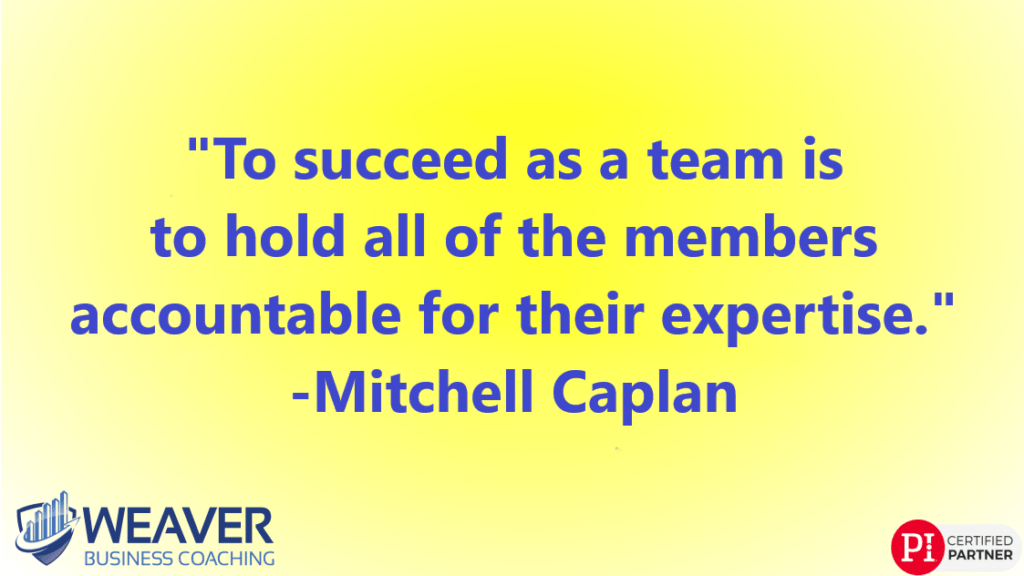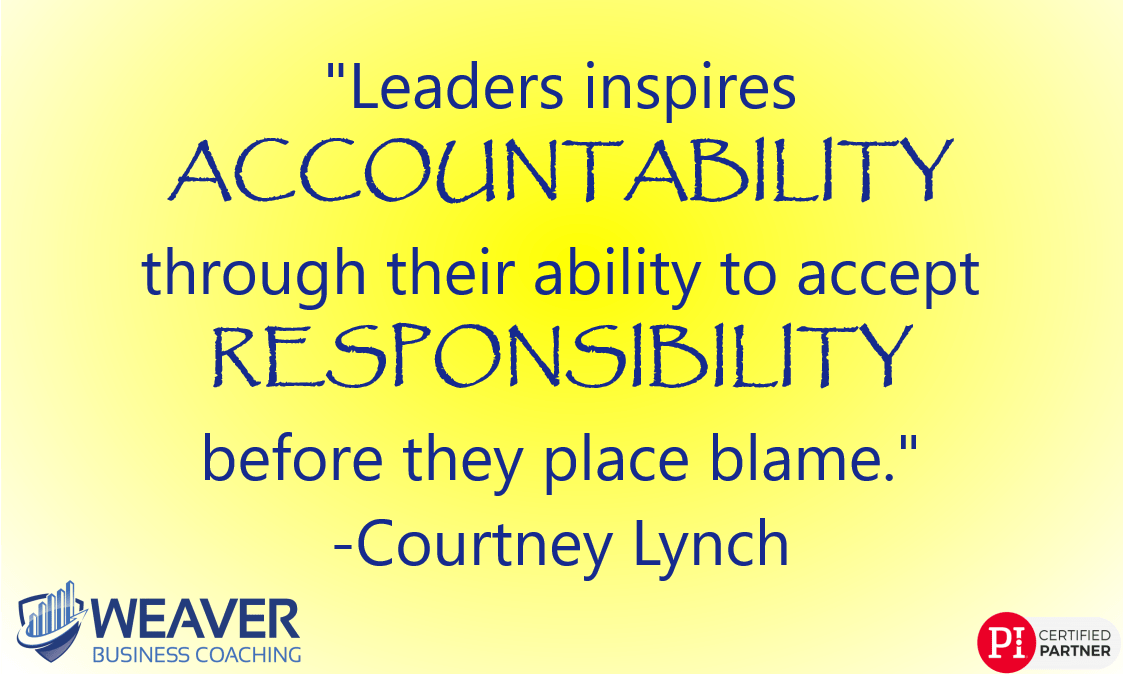When I talk to my children about ‘responsibility’ or being held ‘accountable for their actions’ it does not always go well. Human nature is to shy away from responsibility. In business, it is often no different. Employees often view these words as negatives, especially when they feel like it is being forced upon them arbitrarily or by the higher-ups.
But at the same time, people do not like to work in environments where they don’t know the expectations, rules, or even the norms.
People are intrinsically motivated to fulfill their commitments for a range of reasons, which might include status, advancement, self-satisfaction, and ego.

Create a Culture of Accountability
Creating an accountability culture encourages more responsibility among employees and cascades accountability through the company. This culture creates the messages, structures, and processes people need in order to get done what they say they’ll do.
It not only makes it easier, but it also makes people want to go the extra mile because they can clearly see their personal progress, they’re regularly receiving individualized coaching and praise, and they’re not being forced to merely comply.
Again, leaders can’t force people to develop a meaningful sense of accountability. However, leaders can create conditions that foster personal commitment, by shaping an organizational culture that promotes responsibility.
To start creating a culture of accountability, here are 5 tips:
1. Define what people are accountable for.
In various surveys, almost half of workers report that they are not sure what is expected of them, and just less than half when it comes to managers.
Employees need clearly defined expectations to achieve goals.
This starts with clearly defined job descriptions. If each team member knows their area of absolute accountability, as well as areas of shared accountability they will be able to rise to those levels of expectations.
Organizations should have evergreen responsibilities that support the organization’s mission, values, and purpose, as well. For example, working on ‘customer centricity or quality’ is something that the organization needs teams to focus on continuously.
However, there are also times when a company may need employees to focus on responsibilities that are short-term or long-term, but not permanent, such as large-scale change initiatives, or projects.
In every case, accountability comes from modeled behavior. Leaders need to demonstrate accountability through their own actions and time spent on defining what their team is responsible for, and openly showing how they are being accountable to the team and organization. When leaders model accountability, the entire company shifts towards a culture of accountability.

2. Set and cascade goals throughout the organization.
Defining accountability helps align individuals and teams toward a common outcome, commonly referred to as objectives or goals. Goals inform employees of what’s expected of them and help employees determine how to accomplish their responsibilities.
After employees clearly understand what they’re accountable for they need ways to measure those things. Leaders need to help them set individualized SMART goals that align with their individual roles. Most, if not all, employees should have metrics defined that help them know if they’re delivering on the organization’s goals.
And giving people a say in goal setting can galvanize their commitment to achieving them. Altogether, these actions can help solve a lack of accountability when a lack of clarity is the true problem.
Not all goals are equal. Be sure to prioritize goals and ongoing communication about how everyone’s personal contributions and successes impact the organization’s achievements.
3. Provide updates on progress.
People and teams need feedback and updates to allow for course correction toward their goals.
Feedback can come from customer or employee surveys, ongoing project updates, key listening posts with critical stakeholders, or some combination of these. The most effective form of feedback, however, comes from frequent conversations between leaders and employees.
When preparing to provide a progress update, leaders should not ask themselves if they have all the data, but instead, if they have the right data. Data should be specific to performance so that leaders can speak to the behavior that can be changed or corrected to increase progress.

4. Align development, learning, and growth.
Whether through coaching by leaders, the training of the company, or ongoing development, organizations must provide opportunities for employees to improve, learn, and grow.
Gallup.com reports that millennials rank the opportunity to learn and grow in a job above all other job considerations. And this is high on the ranks for other generations as well.
Leaders who focus on employee development instill a growth mindset in employees, help them address the roadblocks that prevent their ability to deliver on goals and increase learning and growth in an employee’s role.
5. Recognize and celebrate progress.
Focus on responsibility and accountability must come with feedback and recognition.
Identify, celebrate, and learn from successes. It motivates employees to stretch and creates responsible role models for others to follow.
This feedback and praise can, and should, come in a variety of different ways. Mix it up and keep it fun, innovative, and fresh for all involved.